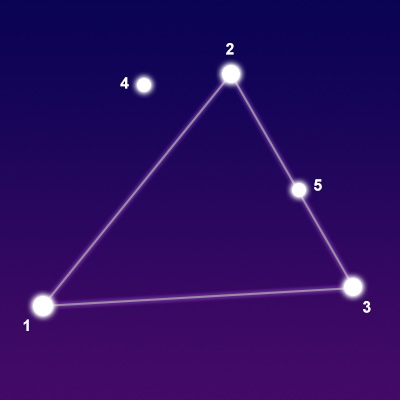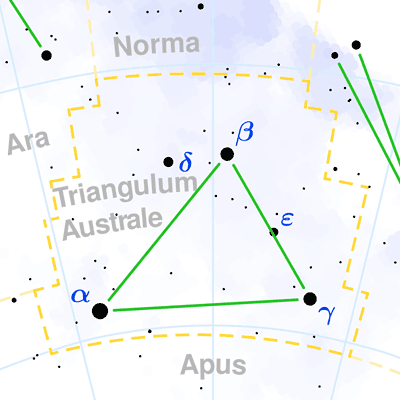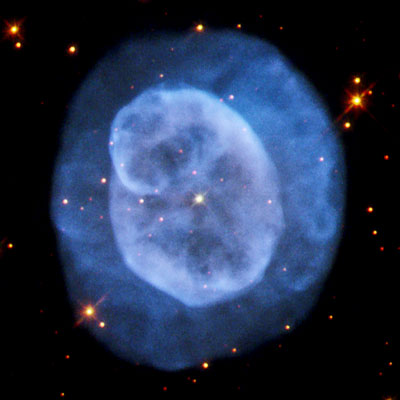Pronunciation:
(try-ANG-gu-lum ahs-TRAY-lee)Abbreviation:
TrAGenitive:
Trianguli AustralisRight Ascension:
16 hoursDeclination:
-65 degreesArea in Square Degrees:
110Crosses Meridian:
9 PM, July 5Visible Between Latitudes:
15 and -90 degreesThe constellation Triangulum Australe, the southern triangle, is located in the southern hemisphere of the sky. It is completely visible at latitudes south of 20 degrees from April through June. It is a small constellation filling only 110 square degrees of the sky. This makes it the sixth smallest constellation in the night sky. The three bright stars that form the triangle have been called the "Three Patriarchs,” Abraham, Isaac and Jacob. They are so recognizable that they can be used to locate other neighboring constellations such as Apus in the south, Norma in the north, Circinus and Centaurus in the west, and Ara and Pavo to the east.
There is no mythology associated with Triangulum Australe. It is the smallest of the12 constellations named by the Dutch astronomer Petrus Plancius to fill in the blanks in the southern sky. It was first depicted in Johan Bayer’s star atlas in 1603. It was originally called Triangulum Antarticus. The French astronomer Nicolas Louis de Lacaille called it le Triangle Austral ou le Niveau on his planisphere in 1756. It was described as a surveyor’s level. It was one of several constellations that represented surveyor’s tools. It was later described by astronomer Johann Bode as a level and given the name le Triangle Austral ou le Niveau.

common points of interest © Sea and Sky

© Torsten Bronger CC BY-SA 3.0
Betria
Gatria
Delta Triangulum Australis
Epsilon Triangulum Australis
"Beta of Triangulum Australe"
"Gamma of Triangulum Australe"
N/A
N/A
Double Star
White Dwarf Star
Binary Star System
Orange Subgiant Star
2.85
2.87
3.86
4.11
Triangulum Australe contains three stars brighter than magnitude 3. The brightest is Atria with a visual magnitude of 1.91. It is an orange giant star located about 391 light years from Earth. The second brightest star is Betri. It is a double star with a combined magnitude of 2.85. It lies about 40 light years away. Gatria is the third brightest star with a magnitude of 2.87. It is a white dwarf star that is believed to be only 260 million years old. It is approximately 390 light years from our solar system.
Triangulum Australe contains no Messier objects. It does, however, contain a number of dim deep-sky objects. These include a pair of merging galaxies known as ESO 69-6, an open star cluster known as NGC 5938, a barred spiral galaxy known as ESO 137-001, a planetary nebula known as NGC 5979, and another planetary nebula called Heinze 2-138. These objects are extremely dim and can only be seen in large telescopes.

© Judy Schmidt / CC BY 2.0



